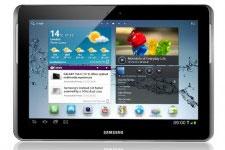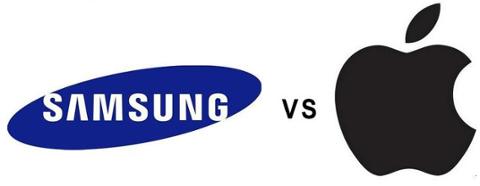 Samsung may be aligned with Android and one of Apple’s largest competitors in the mobile space, but why are we seeing Retina displays in iPads and not Samsung’s own Galaxy-branded tablets? Why would Samsung allow itself to be trumped by a competitor? Is the new iPad display as good as Apple says it is? Share your thoughts in the comments below. The reason Samsung chooses AMOLED instead of Retina displays is that it wants to offer a unique, brighter and more spectacular display, according to Wired. AMOLED stands for Active Matrix Organic Light-Emitting Diode. You'll find out that AMOLED pixels "turn on and off more than three times faster than the speed of conventional motion picture film – making these displays ideal for fluid, full-motion video". On the other hand, Retina Display is an LCD screen that uses IPS (in-pane switching) technology. Apple thinks this is better than OLED, but forgets one thing -- OLED is capable of producing a higher contrast (which offers clear images and readability in any environment) and can be more energy-efficient because it doesn't require backlights. AMOLED displays are used by smartphones, tablets, music players, consoles and digital cameras, while Retina Displays are only used in Apple products. Though this shouldn't be a problem for Apple, if the company thinks Retina Display is perfection, it's wrong. Even if AMOLED technology is still young, it's capable of delivering perceived luminescence that is 1.5 times times higher than a conventional LCD display. Another two advantages are great viewing angles and true colors. In fact, the only disadvantage I could find with AMOLED is pixel density, but I'm sure that it's just a matter of months until we will see a device with more than 326 pixel density. Apple could react by creating AMOLED Retina Displays, but let's not get ahead of ourselves. For now, I have to say Samsung's chosen the better path.
Samsung may be aligned with Android and one of Apple’s largest competitors in the mobile space, but why are we seeing Retina displays in iPads and not Samsung’s own Galaxy-branded tablets? Why would Samsung allow itself to be trumped by a competitor? Is the new iPad display as good as Apple says it is? Share your thoughts in the comments below. The reason Samsung chooses AMOLED instead of Retina displays is that it wants to offer a unique, brighter and more spectacular display, according to Wired. AMOLED stands for Active Matrix Organic Light-Emitting Diode. You'll find out that AMOLED pixels "turn on and off more than three times faster than the speed of conventional motion picture film – making these displays ideal for fluid, full-motion video". On the other hand, Retina Display is an LCD screen that uses IPS (in-pane switching) technology. Apple thinks this is better than OLED, but forgets one thing -- OLED is capable of producing a higher contrast (which offers clear images and readability in any environment) and can be more energy-efficient because it doesn't require backlights. AMOLED displays are used by smartphones, tablets, music players, consoles and digital cameras, while Retina Displays are only used in Apple products. Though this shouldn't be a problem for Apple, if the company thinks Retina Display is perfection, it's wrong. Even if AMOLED technology is still young, it's capable of delivering perceived luminescence that is 1.5 times times higher than a conventional LCD display. Another two advantages are great viewing angles and true colors. In fact, the only disadvantage I could find with AMOLED is pixel density, but I'm sure that it's just a matter of months until we will see a device with more than 326 pixel density. Apple could react by creating AMOLED Retina Displays, but let's not get ahead of ourselves. For now, I have to say Samsung's chosen the better path. Samsung Galaxy Offers AMOLED, Not Apple's Retina Displays
 Samsung may be aligned with Android and one of Apple’s largest competitors in the mobile space, but why are we seeing Retina displays in iPads and not Samsung’s own Galaxy-branded tablets? Why would Samsung allow itself to be trumped by a competitor? Is the new iPad display as good as Apple says it is? Share your thoughts in the comments below. The reason Samsung chooses AMOLED instead of Retina displays is that it wants to offer a unique, brighter and more spectacular display, according to Wired. AMOLED stands for Active Matrix Organic Light-Emitting Diode. You'll find out that AMOLED pixels "turn on and off more than three times faster than the speed of conventional motion picture film – making these displays ideal for fluid, full-motion video". On the other hand, Retina Display is an LCD screen that uses IPS (in-pane switching) technology. Apple thinks this is better than OLED, but forgets one thing -- OLED is capable of producing a higher contrast (which offers clear images and readability in any environment) and can be more energy-efficient because it doesn't require backlights. AMOLED displays are used by smartphones, tablets, music players, consoles and digital cameras, while Retina Displays are only used in Apple products. Though this shouldn't be a problem for Apple, if the company thinks Retina Display is perfection, it's wrong. Even if AMOLED technology is still young, it's capable of delivering perceived luminescence that is 1.5 times times higher than a conventional LCD display. Another two advantages are great viewing angles and true colors. In fact, the only disadvantage I could find with AMOLED is pixel density, but I'm sure that it's just a matter of months until we will see a device with more than 326 pixel density. Apple could react by creating AMOLED Retina Displays, but let's not get ahead of ourselves. For now, I have to say Samsung's chosen the better path.
Samsung may be aligned with Android and one of Apple’s largest competitors in the mobile space, but why are we seeing Retina displays in iPads and not Samsung’s own Galaxy-branded tablets? Why would Samsung allow itself to be trumped by a competitor? Is the new iPad display as good as Apple says it is? Share your thoughts in the comments below. The reason Samsung chooses AMOLED instead of Retina displays is that it wants to offer a unique, brighter and more spectacular display, according to Wired. AMOLED stands for Active Matrix Organic Light-Emitting Diode. You'll find out that AMOLED pixels "turn on and off more than three times faster than the speed of conventional motion picture film – making these displays ideal for fluid, full-motion video". On the other hand, Retina Display is an LCD screen that uses IPS (in-pane switching) technology. Apple thinks this is better than OLED, but forgets one thing -- OLED is capable of producing a higher contrast (which offers clear images and readability in any environment) and can be more energy-efficient because it doesn't require backlights. AMOLED displays are used by smartphones, tablets, music players, consoles and digital cameras, while Retina Displays are only used in Apple products. Though this shouldn't be a problem for Apple, if the company thinks Retina Display is perfection, it's wrong. Even if AMOLED technology is still young, it's capable of delivering perceived luminescence that is 1.5 times times higher than a conventional LCD display. Another two advantages are great viewing angles and true colors. In fact, the only disadvantage I could find with AMOLED is pixel density, but I'm sure that it's just a matter of months until we will see a device with more than 326 pixel density. Apple could react by creating AMOLED Retina Displays, but let's not get ahead of ourselves. For now, I have to say Samsung's chosen the better path. 

